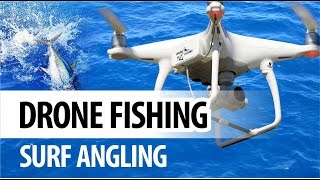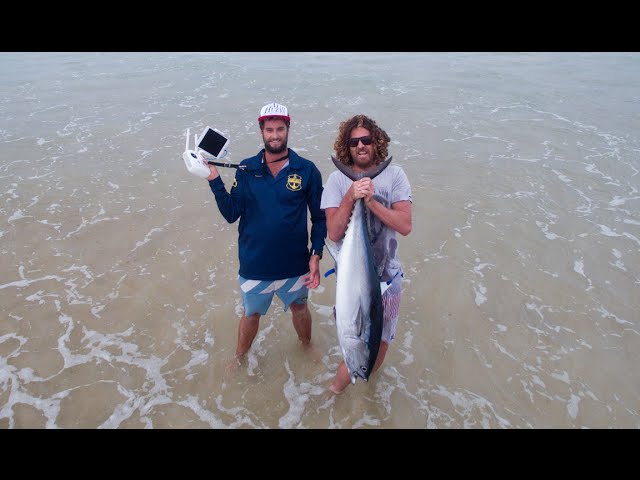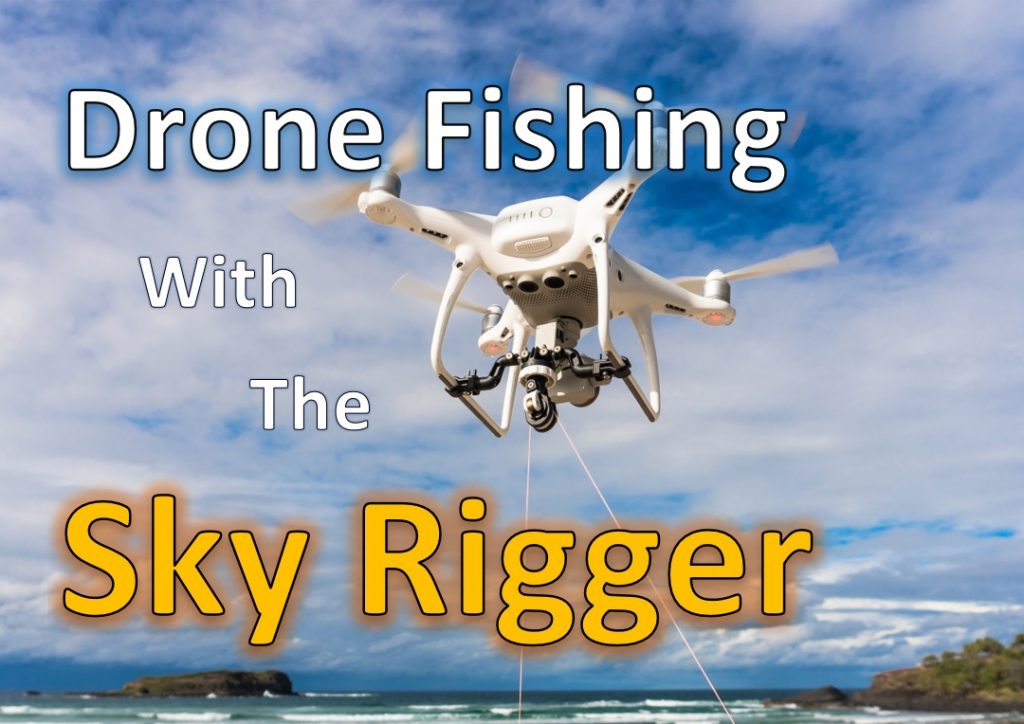
If you are an avid fisherman who lives in Australia, you may be able to use a drone and get an aerial view around the waters. The drones can be equipped with a variety of features, including a GPS positioning system, a GPS receiver, a GPS receiver, a GPS payload release, and an angle adjustable camera. You can also purchase fishing lines, which are stable and safe. One example of such a drone is the SKY RIGGER.
SKY RIGGER is an unmanned fishing line.
The SKY RIGGER, a flexible fishing system for drones, allows you fish from the air using minimal effort. Two rotating leg clamps allow the system to be attached to a variety of drone models. The release mechanism includes a bayonet connector and a cam-lock arm, which allows you to quickly unlock the line clamps. Sky RIGGER, unlike other drones requires no batteries and can handle all fishing techniques safely.
The SKY RIGGER comes with an automatic release mechanism that allows you to let go of the line when a fish catches your fly. The line can be manually released by either your rod or hand. This feature is available for all models of the SKY RIGGER. It is strongly recommended that you first purchase a Phantom 3 before you purchase the new SKY RIGGER. These are the pros and cons of this new line system.
It is equipped with a mechanical payload transfer
The mechanical payload release is a key feature of a drone. Many of them allow anglers to quickly and easily release their fishing line. Some models, however, do not include a release mechanism. Instead, the user must "yank" the fishing line to release the drone from the line. This can be frustrating, especially for people who aren’t comfortable using their fingers to release the line.

Another important feature of the drone's payload release system is its size. The drone's payload should be capable to release its line when the fish strikes. Before you try this method, it is important that you practice catch-and-release fishing. The fish cannot be pulled to shore and then released back into the water. Several people have reported good results with the DJI Phantom drone. However, this technology is not yet comparable to other fishing drones.
It also has a GPS position system
Rippton is an Australian-Dutch joint venture that specializes technology-oriented products for fishing. Its goal is improve anglers' success by creating products that enhance the fishing experience. Rippton's Mobula drone includes a GPS positioning and remote release. The Mobula can be used to store bait at the surface and provide resistance against kite clips. It is also environmentally friendly.
It weighs only 3 pounds and can fly for as long as 18 minutes. It has a high tech GPS system that can be controlled from as far as 2,000 meters away. It can fly for up to 1000m, which is half a mile. Its point-of-interest feature allows it to capture high quality images of its surroundings. You can get amazing views of fish with its high-resolution camera.
It comes with a failsafe feature
The Aerokontiki fisherman drone comes with a failsafe feature: it monitors the battery level and releases the fishing line when needed. In the event of a failure of the battery, it will return to dry ground so that it can continue its mission. It can be operated anywhere with its industrial-grade flight control system. You can also use this drone in watery areas.

FAQ
What is the maximum height you can fly a drone with no license?
There is no restriction on the height at which you can fly a drone according to the FAA. The FAA does require you to register unmanned aircraft systems (UAS), which include the registration number of your model, weight and size, serial numbers, manufacturer's names, date manufactured and other information.
What's the difference between quadcopters and hexacopters?
A quadcopter, a four-rotor helicopter, flies just like a helicopter. It has four rotors that rotate independently. The hexacopter looks similar to a quadcopter, but it has six rotors rather than four. Hexacopters are more stable and maneuverable than quadcopters.
What US states have drones made legal?
You can legally operate a drone for hobby purposes. Federal Aviation Administration (FAA), has issued guidelines that allow you to use small unmanned aircraft systems (UASs). Before they can be flown, these UASs need to be registered with FAA. These UASs can also be flown by commercial operators if they are allowed to fly under certain conditions.
What kind batteries does a drone need?
The majority of drones use lithium-ion cells. The typical drone draws between 3 and 6 volts.
Is it legal to fly a drone in the United States?
Flying drones is an offense in certain countries, including Australia, Canada, Germany and Japan. However, it is legal in other countries like France, Italy, Netherlands, Poland, Russia, Switzerland, Turkey, Ukraine, and Vietnam.
Statistics
- According to industry research from ZipRecruiter , there are 10 cities where the typical salary for a Drone Pilot job is above the national average. (dronesgator.com)
- Research and Markets predict a growth rate of 51.1% over the next five years. (thedroneu.com)
- With the top 10% making over $100/h and the bottom 10% making as low as $10/h. (dronesgator.com)
External Links
How To
How to Fly Drones for Beginners
A drone refers to a remote-controlled aircraft designed for aerial photography, surveillance and scientific research. Drones are a technology that has been around since World War II. DJI's Phantom series quadcopters were first commercially available in 2010. There have been many types of drones since then, including beginner-friendly drones like the Parrot AR Drone 2.0 and professional-grade multi-rotor crafts like the DJI Mavic Pro.
You can fly a drone in many different ways, including:
-
Remote control – This is when you attach a device to your hand that allows you to control the drone's flight path. There are two main types of controllers: On/Off switches (like a radio) and joysticks.
-
Manual Control – This method lets users remotely control the drone by using a smartphone app. The app will give you instructions.
-
Autonomous Flight - This method involves leaving the piloting duties to the drone itself. It's basically flying autonomously without any human intervention. To enable autonomous flight, the drone should have a built in camera and sensors capable recording images and data.
-
Triggered Flight: This is similar in concept to manual control. The pilot manually creates a route and the drone then follows it until it reaches that endpoint. Once the programmed route has been completed, the drone returns to the base automatically.
-
Landing Gear: Some drones have landing gear that allows them safely to land in case they lose power or run low on battery.
-
Goggles: Some pilots use goggles in order to protect themselves against debris when operating.
-
Camera - Certain drones come with cameras that allow you to take photos and videos from high above.
-
Obstacles – Some drones have obstacle avoidance systems that stop them from colliding with obstacles.
-
Speed - Some drones reach speeds exceeding 40 mph.
-
Battery Life - Most drones last between 20 and 3 hours depending on how much power they have.
-
Distance - Some drones can travel up 30 miles depending on the model.
-
Power source: Some drones will require an external power source while others can be powered by internal batteries.
-
Weight - Some drones have a weight of less than 1 pound and others weigh 4 lbs.
-
Size - The size of drones varies from small, easily carried devices to more substantial crafts that weigh in excess of 50 pounds.
-
Price - From high-end models that cost thousands of dollars to low-cost options that start at $100, all drones fall under a certain price category.